Click on images to enlarge
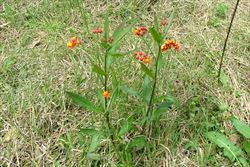
habit (Photo: Sheldon Navie)
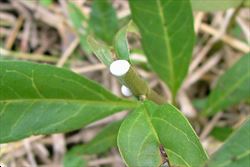
broken stem exuding its milky sap (Photo: Sheldon Navie)
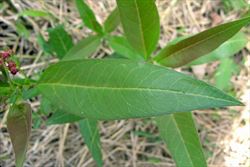
elongated leaves (Photo: Sheldon Navie)
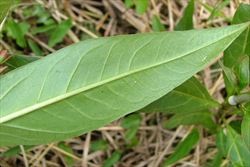
close-up of leaf underside (Photo: Sheldon Navie)

younger leaves and flower buds (Photo: Sheldon Navie)
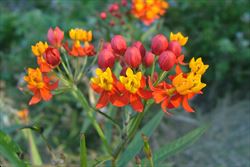
flower clusters (Photo: Sheldon Navie)
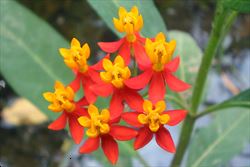
close-up of flowers (Photo: Sheldon Navie)

immature fruit (Photo: Sheldon Navie)
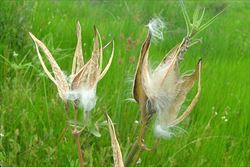
mature fruit releasing their seeds (Photo: Sheldon Navie)
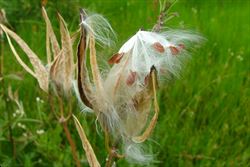
close-up of mature fruit and seeds topped with fluffy hairs (Photo: Sheldon Navie)

close-up of seeds with hairs removed (Photo: Steve Hurst at USDA PLANTS Database)

red-head cotton bush (Asclepias curassavica) is one of the main food plants of the monarch or wanderer butterfly (Danaus plexippus plexippus), a female of which is shown here (Photo: Sheldon Navie)
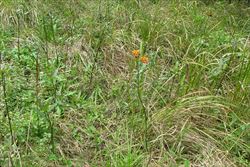
sparse infestation in a gully at Veresdale near Beaudesert (Photo: Sheldon Navie)

the caterpillars of the monarch butterfly (Danaus plexippus plexippus) are often present on this species (Photo: Sheldon Navie)
Scientific Name
Asclepias curassavica L.
Family
Asclepiadaceae (the ACT, Victoria, Tasmania, South Australia, Western Australia and the Northern Territory)Apocynaceae (Queensland and New South Wales)
Common Names
annual milkweed, bastard ipecac, blood flower, blood-flower, bloodflower, bloodflower milkweed, butterfly weed, false ipecac, Indian root, Mexican milkweed, milkweed, red head cottonbush, redhead, red-head cotton bush, redhead cotton bush, red-head cotton-bush, red-head cottonbush, redhead cottonbush, scarlet milkweed, silkweed, swallow-wort, tropical milkweed
Origin
The exact origin of this species is obscure, but it is native to the tropical and sub-tropical regions of the America's.
Naturalised Distribution
Widely naturalised in Australia, but most common and widespread in the eastern parts of the country (i.e. in eastern Queensland and the coastal districts of northern New South Wales). Also naturalised in southern and north-western Western Australia, in the north-western parts of the Northern Territory, in southern Victoria, in the coastal districts of central New South Wales and in some parts of eastern and southern South Australia.
Notes
This species is regarded as an environmental weed in Queensland and Western Australia. It is a common weed of pastures, disturbed sites, waste areas and roadsides and is also found in natural areas (i.e. wetlands, waterways, open woodlands and grasslands).
Red-head cotton bush (Asclepias curassavica) was recently ranked among the top 200 most invasive plants in south-eastern Queensland, and it is mainly a concern in riparian areas and wetlands in this region. In Western Australia it has been found growing in reasonably intact bushland as well as disturbed urban bushland, from Carnarvon to Mandurah.

